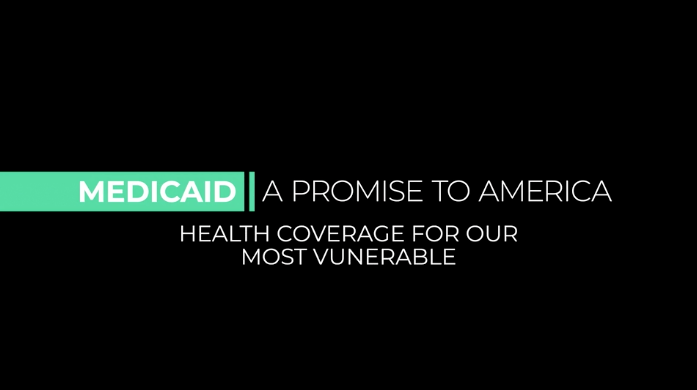Medicaid
-
Perry County to Tuscaloosa: A 70-Minute Drive for Rural Women Seeking Obstetrics Care
I have driven the 57 miles from Perry County, Alabama to Tuscaloosa many times, with long stretches of bumpy road that is marred by stop lights as you get closer to the city. All in all it’s about a 70-minute drive, a 70-minute drive residents of Perry County have to make if they need to…
-
One Month into Medicaid Work Requirement in Arkansas, Warning Lights are Already Flashing
Arkansas’s Department of Human Services released numbers on its work requirement to a select group of reporters and officials late last Friday, and we just saw them earlier this week. The numbers confirm reports of widespread confusion over the work requirement’s rollout and exacerbate our fears that red tape will eventually lead to significant coverage…
-
EPSDT Education for Providers and Advocates
This webinar was hosted by the American Academy of Pediatrics and the Georgetown Center for Children and Families, and provides detailed information to the child health community about Medicaid’s Early and Periodic Screening, Diagnostic and Treatment (EPSDT) benefit, the comprehensive and guaranteed benefit for all children enrolled in the Medicaid program.
-
Public Comments Reflect Strong Opposition to Proposed CMS Medicaid Access Rule
Public comments matter – the recent federal court decision on the Kentucky HEALTH waiver proved that. And they matter not just on Section 1115 waivers; they matter on regulations as well. Under the Administrative Procedures Act, federal agencies have to provide the public with an opportunity to comment on a proposed regulation, and it has…
-
School Readiness as an “Essential Quality Metric” for Children: A Hook for Medicaid in Cross-System Work
The importance of a child’s first months and years can’t be overstated. It’s a time of rapid brain development and learning, where relationships and environments set the course for a child’s lifelong trajectory—even shaping the architecture of the brain. In 2016, Medicaid and CHIP served close to half of all children under 6, and more…
-
Why Aren’t Arkansas Medicaid Enrollees Reporting Work Verification Data?
NPR By: Jacob Kauffman More than a quarter of the 27,000 Arkansans subject to a new work requirement in order to keep Medicaid coverage did not satisfy the state’s new reporting rules, according to state officials. … Marquita Little, health policy director for Arkansas Advocates for Children and Families, says she is concerned that people…
-
There’s a Medicaid ‘subsidy cliff’ health-care officials are worried about
The Washington Post By: Colby Itkowitz There’s a significant population of Medicaid recipients who would lose their health-care coverage if states began requiring them to work — regardless of whether they got a job. … Joan Alker, a Georgetown University public-policy professor who is closely following the waiver submissions, told me the state’s two extra years of…
-
Medicaid’s Vital Role for Schools and Students
It feels like summer just arrived, but back-to-school time is near! Before the back-to-school bell rings, we wanted to take stock of health coverage for school-age children. As SayAhhh! readers are well aware, Medicaid and CHIP, the primary public health coverage sources for children, have worked together in recent decades to bring the rate…
-
Medicaid and CHIP Provide Health Coverage for Many School-Age Children, Yet Gaps Remain
Introduction Children need health coverage to help them stay healthy and ready to learn in the classroom. Medicaid and the Children’s Health Insurance Program (CHIP), the primary public health coverage sources for children, have worked together in recent decades to bring the rate of uninsured children to historic lows. In 2016, only 4.5 percent of…
-
Another View — Tricia Brooks: Citizenship paperwork would turn back NH Medicaid
New Hampshire Union Leader By: Tricia Brooks New Hampshire is proposing to add burdensome paperwork requirements for U.S. citizens to prove eligibility for Medicaid. That’s one of the requests it is making in its Medicaid waiver proposal. This is perplexing because the state and federal governments have spent millions of dollars establishing systems that electronically…
-
A Disturbing Trend of Hiding the Coverage Losses is Emerging in Medicaid Waivers
For those of us closely watching the action on new Section 1115 Medicaid research and demonstration waivers that the Trump Administration has been inviting and approving this year, the recent court decision putting a hold on Kentucky’s plans was welcome news. The court ruled that the Secretary’s decision in granting the Medicaid waiver was “arbitrary…
-
Trump Administration Encourages States to Seek Waivers to Opt Out of Medicaid Drug Rebate Program
On June 27, the Centers for Medicare and Medicaid Services partially approved Massachusetts’ Medicaid waiver proposal, but among other provisions, rejected a proposal to impose a “closed formulary” for prescription drugs under which the state could entirely exclude coverage of certain drugs in ways not permitted under current law. Instead, CMS expressed openness to approving…
-
Video: These Parents of Medically Complex Kids Explain Why Medicaid Matters to Their Families
If you want to know about kids, listen to parents. Sometimes in the health policy and political worlds, it’s easy to forget this simple piece of advice – and sometimes politicians and policymakers are too focused on the latest bill or political win to remember it. Over the last year, we’ve spent a lot of…
-
States Weigh Extending Medicaid for Beneficiaries Who Work
CQ By: Misty Williams States seeking to require people on Medicaid to work are proposing to temporarily extend coverage for those who get jobs but end up earning too much money to qualify for the program. … A study released earlier this year estimated 8,700 low-income parents and caregivers in Alabama could be kicked off Medicaid…
-
Fact check: NC Democrat says Mike Pence expanded Medicaid in Indiana
News Observer By: Paula Specht Democrats in North Carolina argue the state should expand Medicaid to help residents pay for health care. … “In Indiana’s case their waiver contained elements like some increased cost sharing and health savings accounts — other states that have expanded Medicaid have used some of these ideas too,” said Adam…
-
Work requirements to qualify for government aid: How well does it work?
Catholic News Service By: Mark Pattison Ever since the Personal Responsibility and Work Opportunity Reconciliation Act of 1996 — longhand for “welfare reform” — became law, the federal government has imposed work requirements for adults receiving Temporary Assistance for Needy Families money. … Andy Schneider, a research professor at the Center for Children and Families in Georgetown…
-
Research Update: Evidence Continues to Build on Medicaid’s Role Promoting Economic Security
I previously wrote about the primary role of health insurance, which is to protect against economic insecurity, medical debt, and bankruptcy. Recently, I have been reading new studies that continues to build on this body of work. NBER’s Medicaid and Financial Health Using consumer credit data, the authors examine the financial distress of non-elderly adults…
-
Want to Help Young Children? Expand Medicaid.
We are asked a lot about the ways states can do more for young children in Medicaid—and we have a lot to say! Young children’s healthy development is influenced by their interactions and relationships with parents and other adults. So naturally, for the 17 states holding out, we start by raising Medicaid expansion. While we…
-
Research Update: How Has Medicaid Expansion Impacted Workers?
This week, I am reading research showing that there may be links between the Medicaid expansion and trends in employer-sponsored insurance, labor force participation and employment. Health Affairs’ Employer-Sponsored Insurance Stable For Low-Income Workers In Medicaid Expansion States Urban Institute researchers used data from the Health Reform Monitoring Survey between July 2013 and March 2017…
-
Positive Economic Effects from Louisiana’s Medicaid Expansion Provides Example for Southern States
A new report produced by Louisiana State University shows Louisiana’s decision to expand Medicaid to non-elderly adults below 138%of Federal Poverty Level (FPL) has resulted in millions in net revenue for the state. Using an economic impact analysis from the Kaiser Family Foundation, the study finds the Medicaid expansion created 19,195 jobs and $177.8 million…














